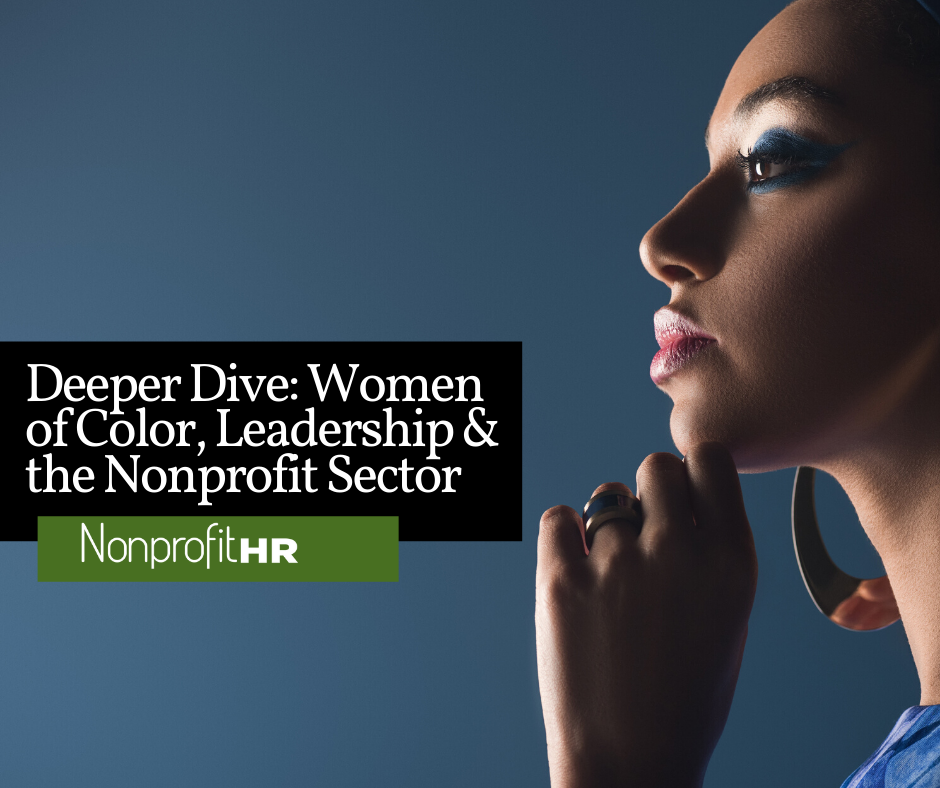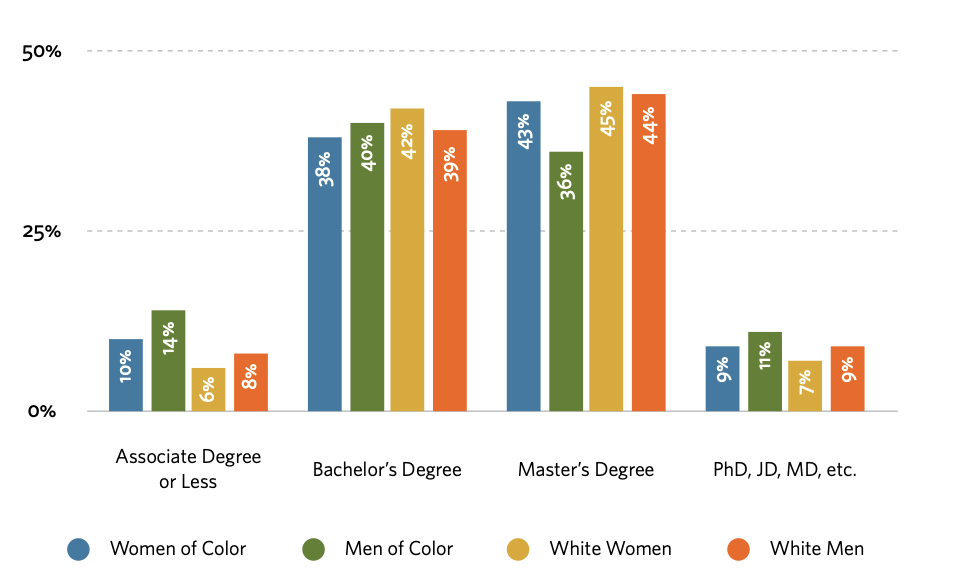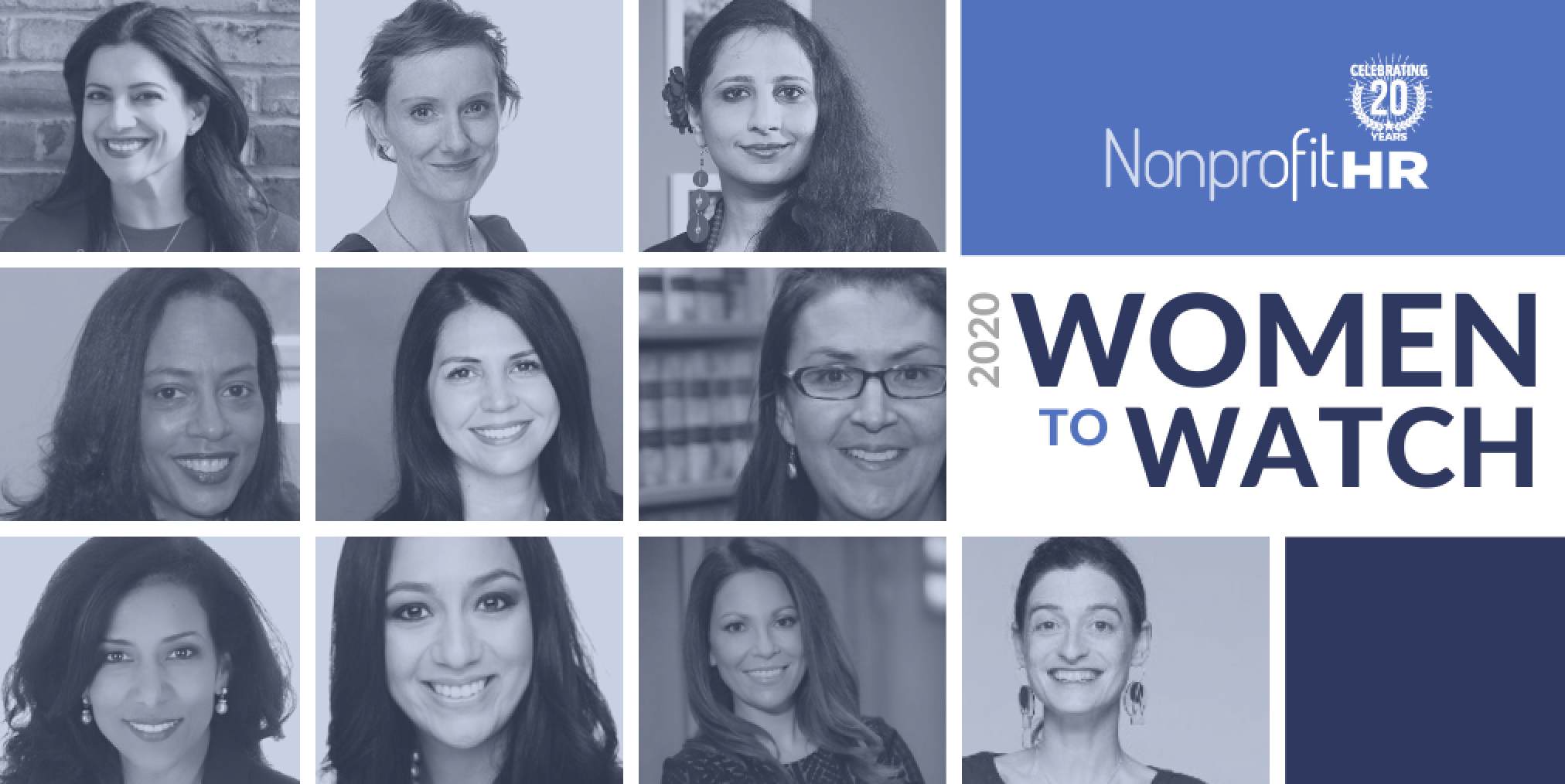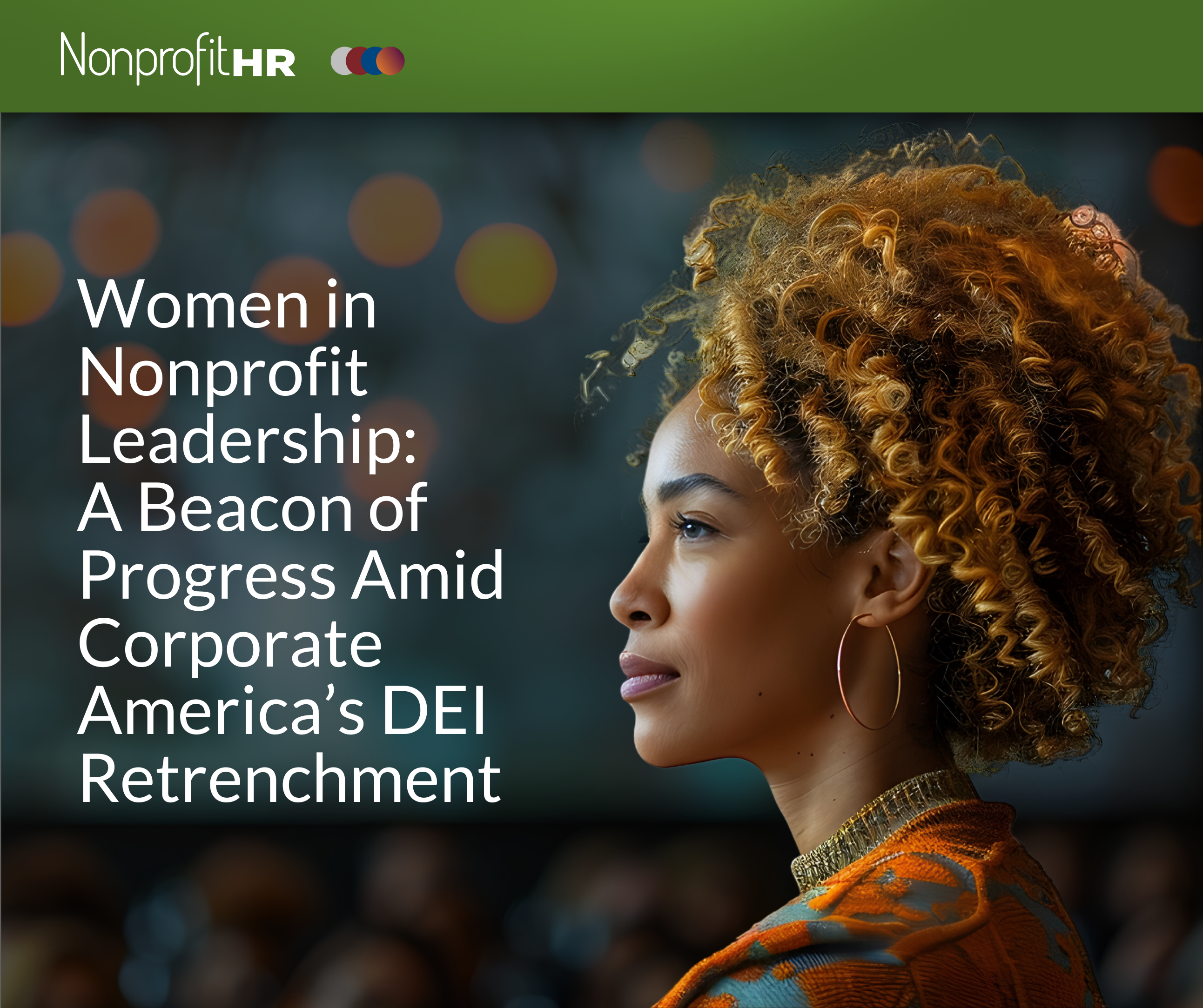WTOP: 5 ways nonprofits can…

The Building Movement Project (BMP) has explored the racial leadership gap in the nonprofit sector for years. BMP first launched a national survey of nonprofit staff in 2016 and 5,000 people responded. BMP’s research revealed that systemic issues—rather than lack of interest, education, and/or experience—explain the lack of people of color in nonprofit executive leadership and board positions.
 The first reports compared the responses of people of color to those of white respondents. More recently, however, BMP disaggregated the people of color respondents to focus on women of color. The theory of intersectionality tells us that the combination of different identities—for example, race and gender, gender identity, and/ or sexual orientation—has a compounding effect on people’s experiences. This includes their experiences in the workplace. In addition to analyzing survey data from a race and gender perspective, BMP also held focus groups for women of color, white women, and—in one city—men of color.
The first reports compared the responses of people of color to those of white respondents. More recently, however, BMP disaggregated the people of color respondents to focus on women of color. The theory of intersectionality tells us that the combination of different identities—for example, race and gender, gender identity, and/ or sexual orientation—has a compounding effect on people’s experiences. This includes their experiences in the workplace. In addition to analyzing survey data from a race and gender perspective, BMP also held focus groups for women of color, white women, and—in one city—men of color.
The first finding is that women of color were the most likely to say that race had a negative impact on their careers (more so than men of color) and the most likely to say gender had a negative impact (more so than white women). Women of color described being passed over for promotions and new projects in favor of white women, white men, and men of color—even those with less experience. Many said they were not seen as leaders nor mentored to move up.

Respondents Interested in Taking a Top Leadership Role Among Non-CEOs (Definitely/Probably Yes), Race to Lead: Women of Color in the Nonprofit Sector (BMP, 2019).
The second key finding is that educating and training women of color is not the solution. Women of color are already well prepared. In addition, among those with a master’s degree and above, women of color were most likely to be in line or administrative staff roles and least likely to be in senior management. BMP also saw salary disparities across gender lines with women earning the least. Women of color were the most likely to express frustrations with inadequate salaries. Moreover, the most common theme in survey write-in responses from women of color was not being paid the same as people doing the same jobs, even when they had more qualifications.
Specifically, the report shared: “There were few differences in education between women of color, men of color, white women, and white men (see graph below). Among women, Asian women were most likely to have a master’s degree and above (60%), followed by Black women (56%), white women (52%), and Latinx women (46%). Unfortunately, the data also showed that education and training are often not sufficient to help women of color receive equal compensation and opportunities for advancement.” (BMP, 2019).

Educational Attainment by Race and Gender, Race to Lead: Women of Color in the Nonprofit Sector (BMP, 2019).
Finally, BMP observed that the nonprofit landscape is not always supportive of the leadership of women of color. Women of color shared experiences with on one hand being “invisible” and on the other “hypervisible.”Women of color were the least likely to have had mentoring on the job and feedback and performance evaluations. On the other hand, women of color staff, including executives, were constantly under a spotlight—questioned about their decisions and confronted with biased performance evaluations. They also dealt with racism from white staff (both men and women), sexism from men (including men of color), and gendered racism from a variety of groups. These experiences varied for different groups—the full Women of Color report has a special section on themes among transwomen of color, black women, Latinx women,  Asian women, and Native American/Indigenous women in the nonprofit sector.
Asian women, and Native American/Indigenous women in the nonprofit sector.
The concept of intersectionality—a term coined by Dr. Kimberlé Crenshaw—is not new. But the nonprofit sector should address how the various “isms” women of color face have a compounding impact on their experiences.
Steps HR Professionals of Nonprofits Can Take
BMP recommends a number of steps that are relevant to HR professionals.
- Ensure that all employees have access to mentoring. Some BMP research participants said they were interested in affinity groups to connect with similar peers.
- Consider mentoring and affinity groups, which can be used to support women of color and are not a replacement for addressing internal organization biases on the basis of both race
gender. Women of color cannot advance if decision-makers will not allow that to happen. - Empower your DEI champions. Staff should also know who they can go to with concerns and that organizations will address discrimination in the workplace when it occurs and ensure real consequences for those doing harm.
- Analyze your organization’s salary data to ensure equitable compensation.
- Establish transparency regarding salary and pay scales so staff knows if they are being paid fairly and what it takes to reach the next level.
Of utmost concern is systemic change and all nonprofit staff can join in our call for action. In philanthropy, that means funding more women of color-led organizations, asking grantees to share race and gender data, and encouraging nonprofits to address equity. In public policy, that means salary parity laws and increasing funding to government agencies that are supposed to track and address discrimination.
The Building Movement Project released its second Race to Lead Survey in Summer of 2019. The findings from this survey—which include new questions on organizational dynamics and strategies to address equity — are now available for download.

By Ofronama Biu
Senior Research Associate
Ofronama Biu is a Senior Research Associate at the Building Movement Project and has over 10 years of experience in higher education and nonprofit organizations. She works on national projects focused on leadership, including BMP’s Race to Lead reports, service and social change, and movement building. She is a PhD candidate at the Milano School of International Affairs, Management, and Urban Policy at The New School. Her research interests include labor market and workforce development policies and racial stratification.
This article, a reprint from Nonprofit HR’s 2019 Diversity Practices report, was written in collaboration with the Building Movement Project.
Bui, O. (2019). Race to Lead: Women of Color in the Nonprofit Sector. Building Movement Project. Retrieved from https://buildingmovement.org/wp-content/uploads/2019/08/Race-to-Lead-Women-of-Color-in-the-Nonprofit-Sector.pdf



































